Most photographers want a fast, standard prime lens in their collection, but what do you do when there are no fewer than seven to choose between?
This is the very situation in which Sony full-frame E-mount users find themselves. What started as a lens ecosystem with just one option – the much-lauded FE 55mm f/1.8 – has exploded to include one nifty-fifty prime, one expensive f/1.4 and one macro-lens from Sony itself, one 50mm f/2 manual focus prime from Zeiss, one 50mm f/0.95 prime from Mitakon Zhongi, and one 50mm f/1.4 prime from Samyang-Rokinon. The final lens on the list is special because it, along with the 14mm f/2.8, is the first autofocus lens from the brand.
In the following comparison, we’re going to take an in-depth look at how the FE 55mm f/1.8 compares to the Samyang-Rokinon 50mm f/1.4. And before anybody mentions it – yes, we would have loved to compare all the 50mm primes for Sony E-mount, much as we did with the Micro Four Thirds portrait lenses, but the camera gods made it impossible to have all the gear at the same time.
Ethics statement: We purchased the Sony FE 55mm f/1.8 for our own personal use, while the Samyang 50mm was loaned to us for review. We were not asked to write anything about these lenses, nor were we provided any other compensation of any kind. Within the article, there are affiliate links. If you buy something after clicking the link, we will receive a small commission. To know more about our ethics, you can visit our full disclosure page. Thank you!
[toc heading_levels=”2″]
Main specifications
Samyang AF 50/1.4 FE
- Mount: Sony E-mount
- Format coverage: 35mm
- Focal length: 50mm
- Aperture range: f/1.4 – 16
- Aperture blades: 9
- Lens groups / elements: 8/9
- Angle of view: 47° (full-frame), 31.4° (APS-C)
- Minimum focus distance: 0.45m
- Filter diameter: 67mm
- Weight: 585g
- Length: 97.7mm
Sony FE 55/1.8
- Mount: Sony E-mount
- Format coverage: 35mm format
- Focal length: 55mm
- Aperture range: f/1.8 – 22
- Aperture blades: 9
- Lens groups / elements: 5/7
- Angle of view: 43° (full-frame), 29° (APS-C)
- Minimum focus distance: 0.50m
- Filter diameter: 49mm
- Weight: 281g
- Length: 70.5mm
Design and Ease of Use
Both the Samyang 50mm and Sony 55mm are considered standard, full-frame prime lenses, though the Sony’s field of view is marginally narrower. The Samyang is approximately 2/3 faster. If you set the aperture in 1/3 steps, there are three values you can use that are faster than the Sony’s maximum aperture of 1.8 – 1.4, 1.6 and 1.7 – meaning that you can achieve a little bit more shallow depth of field and work in poorer light conditions without raising your ISO value.
The first thing you notice when you place the two lenses side-by-side, besides their solid metal construction, is that the Samyang is both taller and wider. Hold it in your hand, and its additional weight becomes obvious too. I wouldn’t call it an extremely heavy lens but between the two, I’d be much happier to carry around the Sony for a full day’s work than the Samyang. Between the two lenses, only the Sony features dust and moisture resistance.
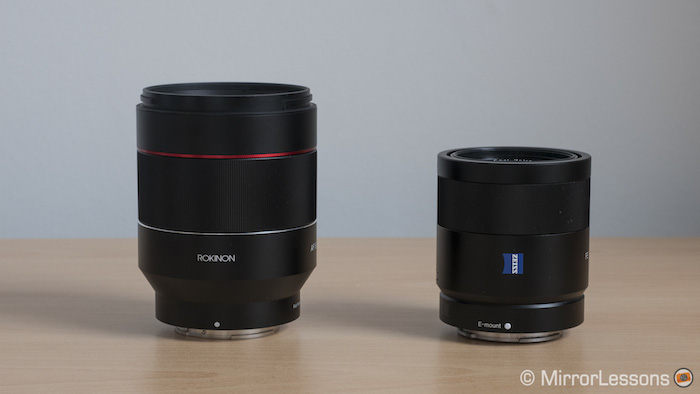
Check price of the Sony 55mm on B&H Photo.
When you attach their provided petal-shaped lens hoods, both lenses look longer than they actually are. Whereas the Sony balances well on both Sony full-frame and APS-C cameras, the Samyang is a little too big for APS-C as you can see in the images below.
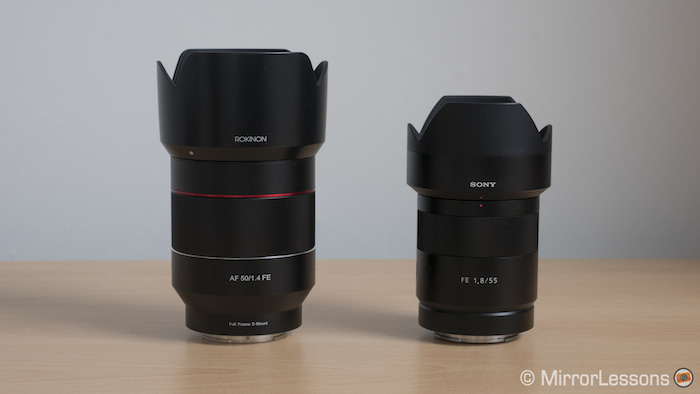
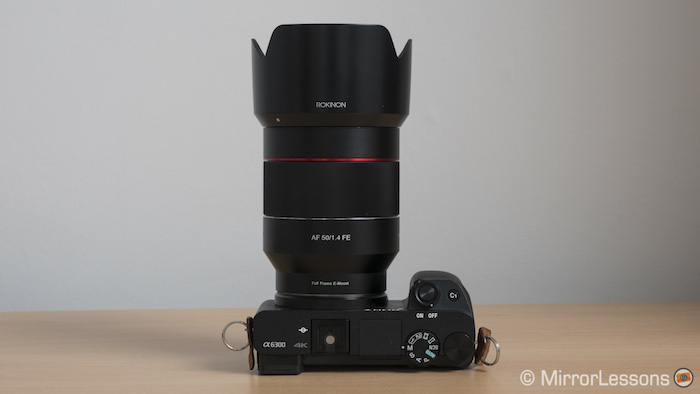
Both lenses feature a smooth and accurate fly-by-wire focusing ring that is large and easy to turn thanks to the ribbing along the surface. To go from the minimum focus distance to infinity, both rings require a half-turn. Neither has a aperture ring nor a distance scale, but this isn’t uncommon on autofocus lenses for this system.
Speaking of the minimum focus distance, the Samyang’s is a little shorter at 0.45m as opposed to .50m on the Sony. However, since the Sony’s field of view is a little longer, the maximum magnification ratio is quite similar (0.14x on the Sony and 0.15x on the Samyang).
Both lenses feature a filter thread – 67mm on the Samyang and 49mm on the Sony – and accept circular and external filters, including those from the LEE Seven5 system for mirrorless cameras.
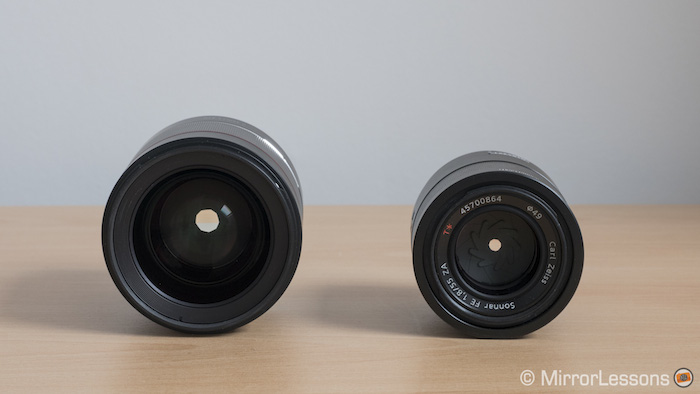
Optical Quality – Through the lens
The first thing you notice when comparing these the Samyang 50mm and Sony 55mm side-by-side is the slight difference in overall rendering. Even when set to the same manual white balance value or preset, the Samyang appears to lean towards a yellower tint, while the Sony is colder. However, this can quite easily be adjusted in Lightroom or any other post-production software to suit your personal preference especially if you use the RAW files.
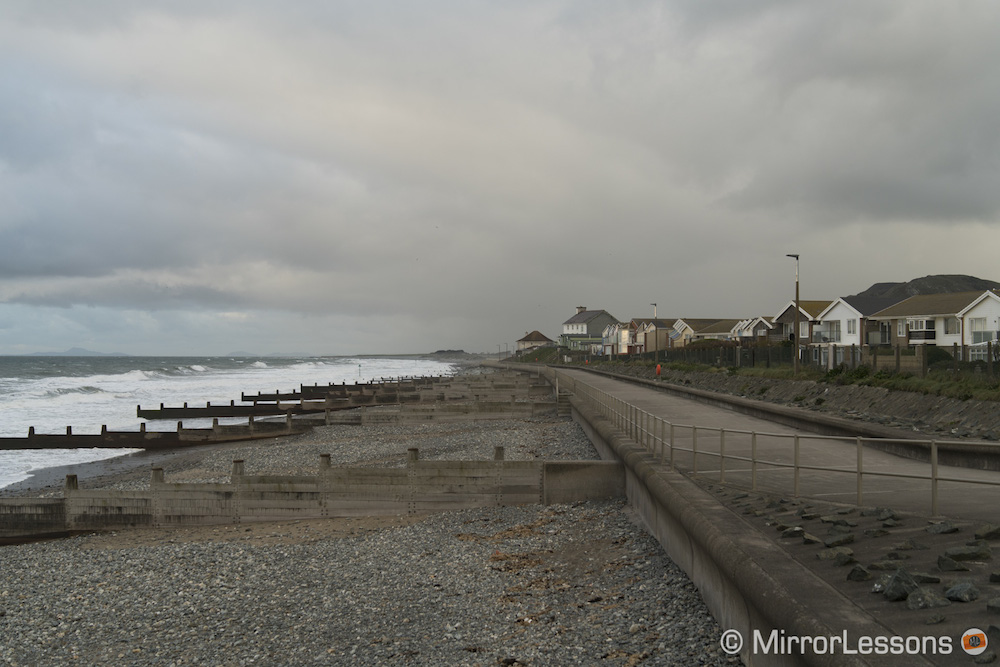
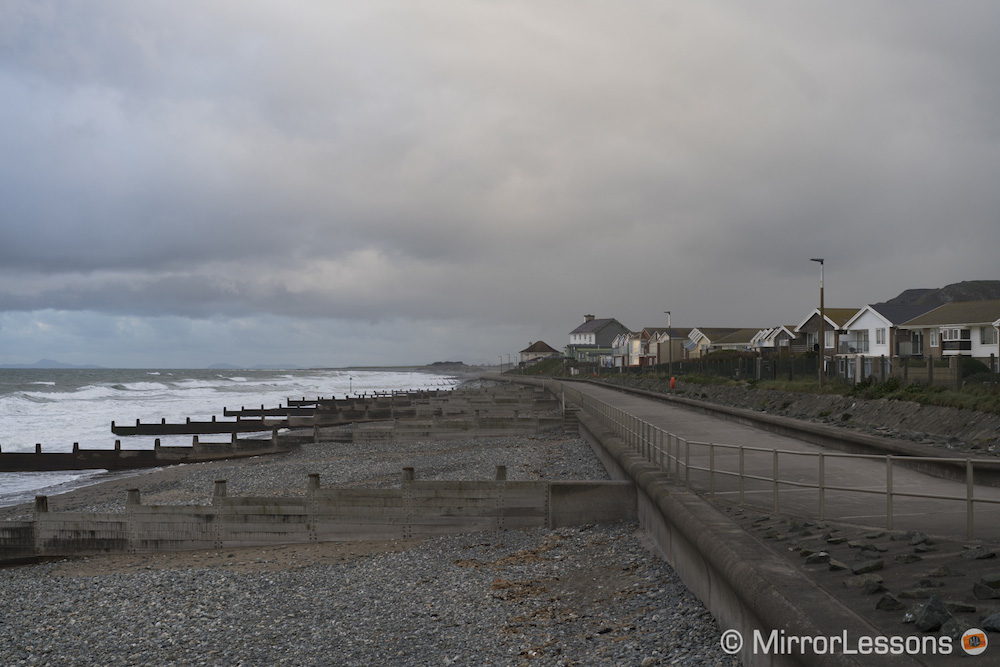
Not to give away the punch line but I was pleasantly surprised by the sharpness of the Samyang lens compared to the Sony, which we already knew to be pin-sharp.
To perform my tests, I took two sets of comparison shots on our Sony A7r II: one at a close distance and the other at infinity. Since the Samyang has three values that are faster than the Sony’s maximum aperture of 1.8, I could only really start drawing direct comparisons from f/2 onwards. Keep in mind that the Samyang also lacks the f/22 value, which is no great loss since diffraction is present.
Let’s start with the shots taken at a close distance of a small figurine.
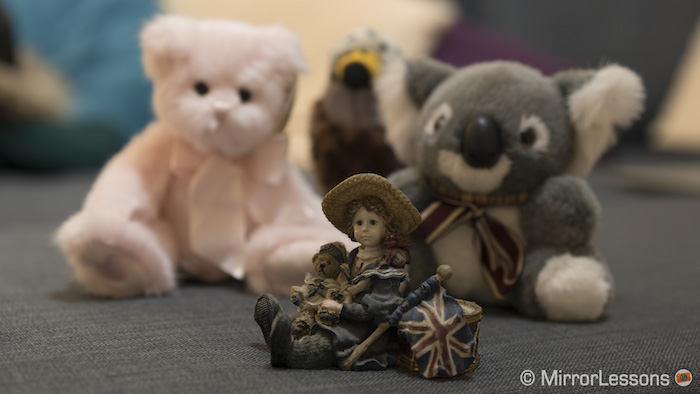
If we compare the respective fastest apertures of the two lenses – 1.4 on the Samyang and 1.8 on the Sony – it is clear that the Sony is sharper, which could only be expected. The risk at this aperture is, as always, ending up with a focus point that’s slightly off the mark due to the depth of field being so razor thin.
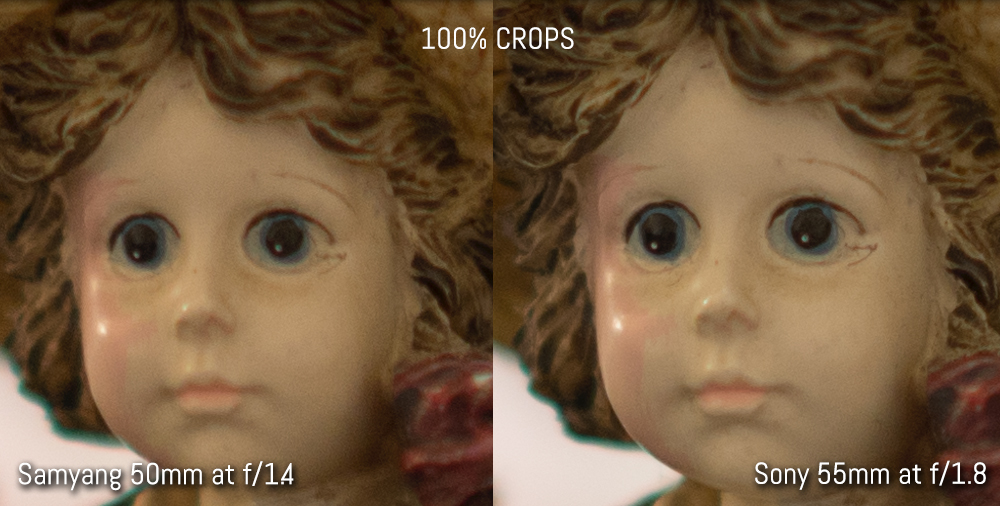
Once you stop down to f/1.7 on the Samyang, it almost matches the Sony in terms of sharpness. In in the case of our sample images, we can see that eyes of the figurine in particular become more defined.
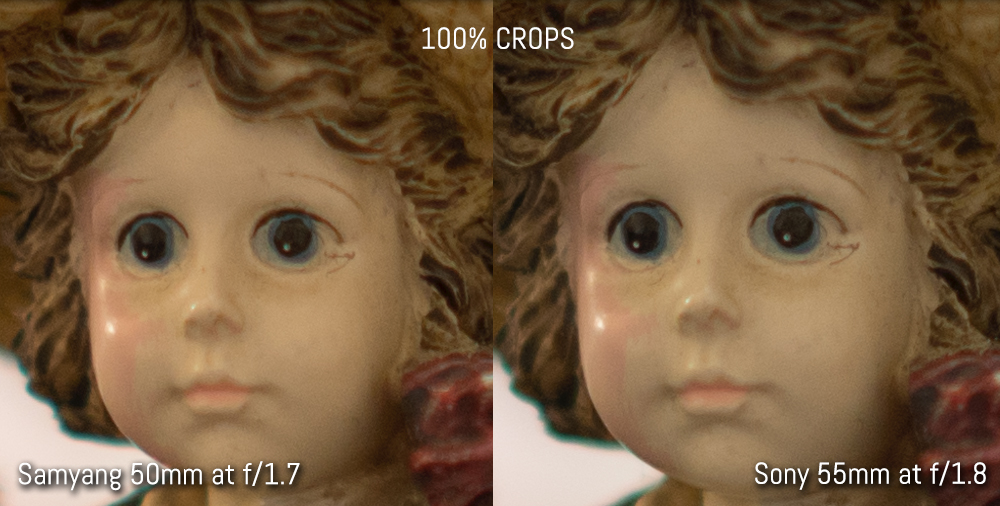
Finally we come to the aperture values the two lenses share. At f/2, the lenses perform in a similar manner, though the Sony reveals itself to be the sharper of the two in the finest details, such as the line extending from the figurine’s eye.
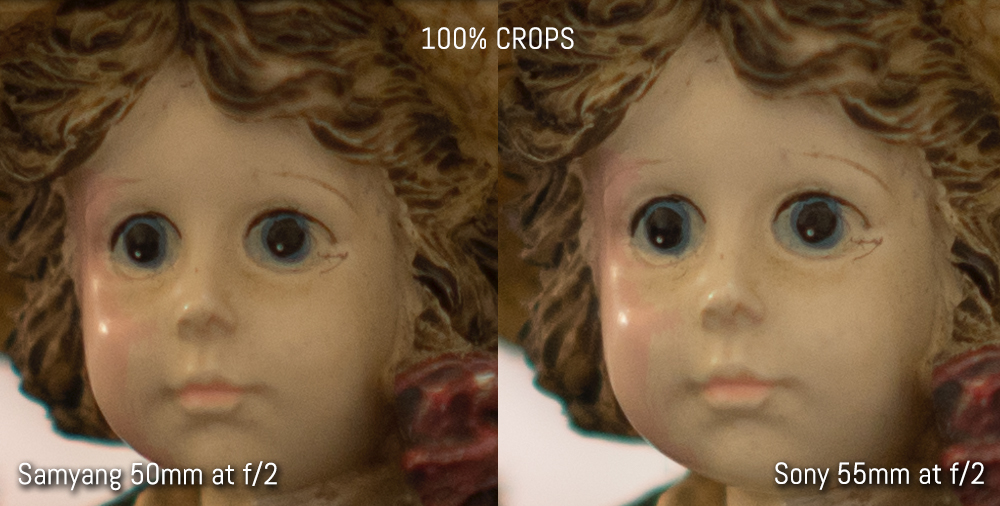
At f/2.8 and f/4, the Sony remains sharper (but not by much) and by 5.6, both lenses are razor sharp. In fact, the results so close that it becomes difficult to distinguish between the two. This trend continues through to f/11.

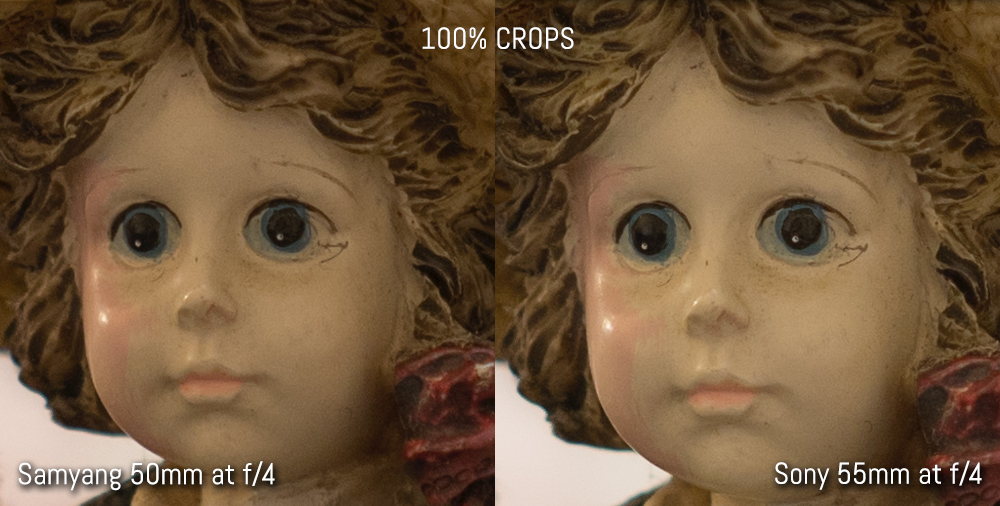
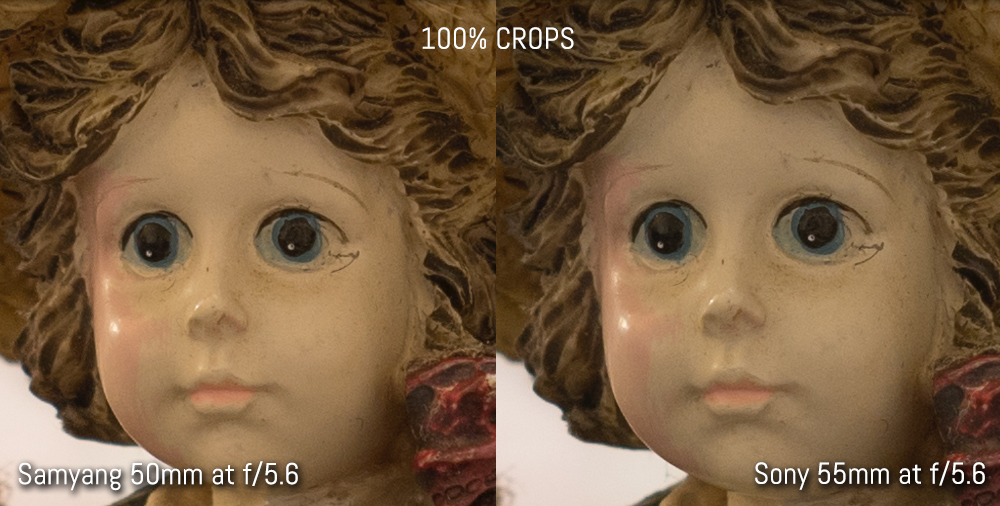


By f/16, which is also the Samyang’s slowest aperture, softness caused by diffraction has kicked in, giving the Sony a slight advantage. At f/22, the Sony suddenly becomes very soft.
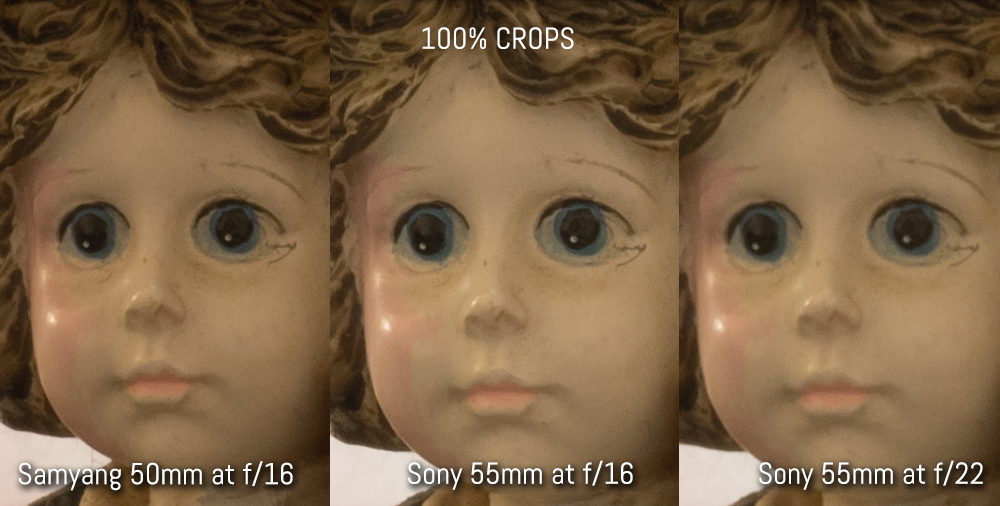
At infinity, the Samyang reaches peak sharpness at around f/8, though f/4 and f/5.6 aren’t far behind. Up to f/2.8, the results are quite soft. The Sony, on the other hand, seems to reach peak sharpness between f/4 and f/5.6. Both lenses are useable up to f/11 but become quite soft by f/16. f/22 on the Sony should once again be avoided due to diffraction.
Comparing the two lenses at the centre, we can see that the Sony is a little sharper than the Samyang through the aperture range, making it the better choice for landscapes. (I apologise for the difference in lighting between samples – the weather isn’t always cooperative here in the UK!)
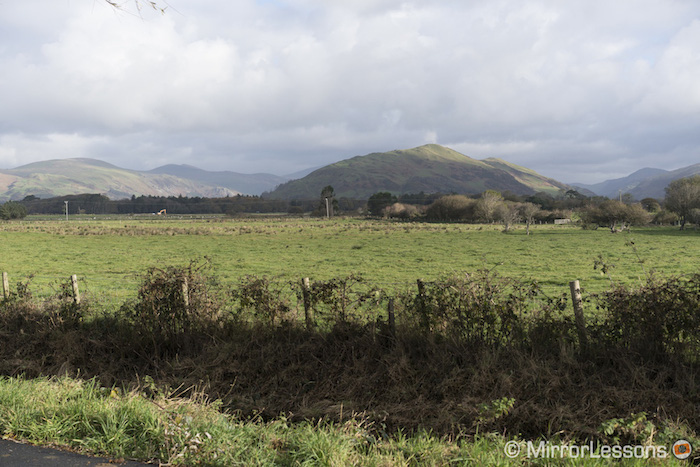
The Sony gains even more of an advantage at the edges of the frame where the Samyang becomes quite soft. Below you can see how the two compare at f/5.6 and f/8, two apertures that are likely to be used for landscapes.
One of the characteristics that most interests photographers is the out-of-focus rendering or bokeh.
To compare the specular highlights, I set up some artificial Christmas lights behind a teddy bear. Some of the highlights are located in the centre whilst other are closer to the edges of the frame.
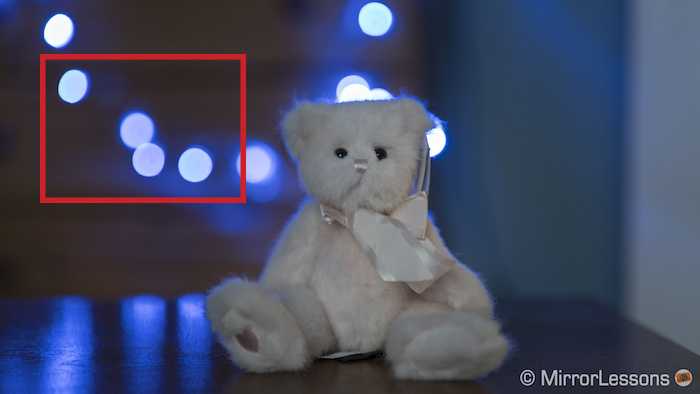
The first pair of images shows the specular highlights at the respective fastest apertures of the two lenses. Naturally, they are bigger on the 50mm because of the faster 1.4 aperture and produce less of a “cat’s eye” shape than the Sony, especially near the corners. Both reveal a very slight onion ring effect at the centre.
Once you stop down to f/2, the specular highlights produced by the Samyang take on a symmetrical nonagonal shape whilst those of the Sony become a little rounder than before.
By f/2 and f/4, the results from both lenses are almost identical in terms of size and shape.
Corner shading (vignetting), distortion and chromatic aberration can all be corrected by applying the corresponding profile in Lightroom, so none of them really present an issue. When you import your images into Lightroom for the first time, you will likely find that the profile is already active if you use a recent version of the software.
Without these corrections, corner shading is noticeable in the corners at the fastest apertures on both lenses but soon disappears once you stop down. Both lenses also display some very minor barrel distortion.
Chromatic aberration may require a little more work to get rid of, especially with the Samyang at its fastest apertures. Happily, it seems to disappear by f/4 on both lenses. Usually the “Remove Chromatic Aberration” button in Lightroom can help to reduce the effect.
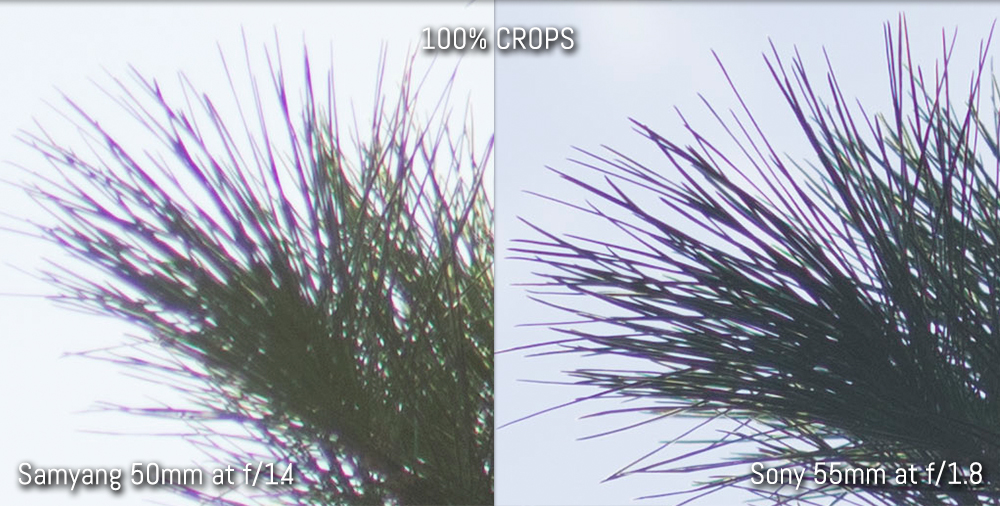
If you usually work with the OOC JPGS, keep in mind that it is possible to turn the corrections for vignetting, distortion and chromatic aberration to Auto or Off in the camera’s Lens Comp. menu. The camera (in this case, the A7r II) does a good job of minimising the first two but may leave traces of the latter.
I already mentioned the minimum focus distance in the design section but it is worth providing a couple of sample images to show you just how small the difference is. Between the two, the Samyang is able to focus just a smidgen closer but in the real world, the difference is insignificant.
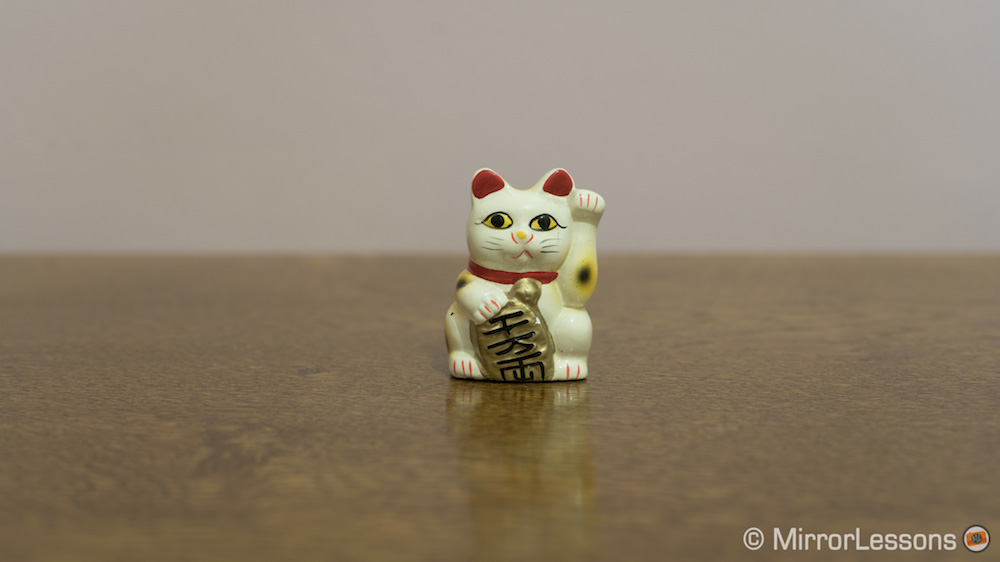
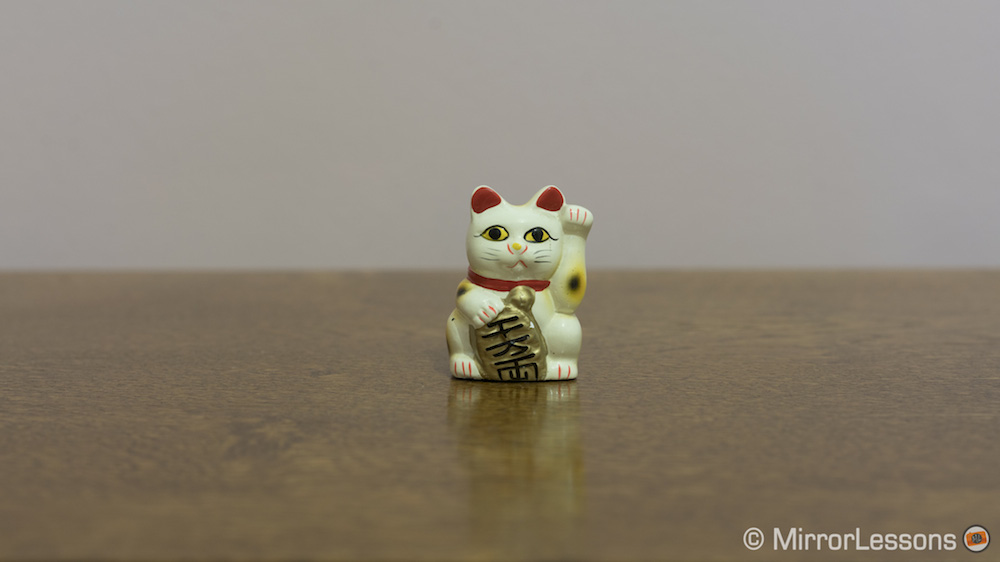
Finally, we come to flare. I’ve left this section until the end because in our month with the Samyang, we didn’t come across a single example, even when shooting into direct sunlight. As such, it would appear that the UMC Super multi-layer coating on the front element, combined with the petal-shaped lens hood, does an extremely good job of mitigating flare and ghosting. The same can be said for the Sony which we’ve owned for almost two years now – we’ve only ever come across very small flares in very extreme circumstances. In this case, it is the Zeiss T* coating that keeps flare at bay.
For portraits on the A7r II and a6300
Now that we’ve looked at the optical quality, let’s analyse some real-world examples for one of the genres that these two fast prime lenses might be used: environmental portraits.
I used the two lenses on the A7r II and the a6300 and found that I was able to achieve lots of subject separation and an attractive out-of-focus rendering in the background with both. Though the rendering is quite similar, the Sony produces a more swirly bokeh than the Samyang. The crop factor on the APS-C camera will give you an equivalent focal length of 75mm with the Samyang or 82.5mm with the Sony.
Sony A7r II






Sony a6300






Autofocus Performance
Before we begin this section, I feel it is worth reiterating the fact that the Samyang 50mm f/1.4 is the company’s very first autofocus lens along with the 14mm f/2.8. Up until their release, all Samyang lenses had been manual focus, so the fact that they have begun producing AF lenses for the E-mount reveals the brand’s faith in the Sony system.
In single AF for stills, the Samyang lens is fairly quick to lock focus but the Sony is definitely faster in both good and poor light conditions.
As for continuous AF for stills, the performance seems to be closer. I ended up with a very good keeper rate with both on the Sony a6300 when photographing Mathieu running towards me, as you can see from the two sets below.
Green means in-focus, yellow means slightly out-of-focus and red means completely out-of-focus. (Note that while the four successive red shots in the Samyang set might suggest that Mathieu had reached the minimum focus distance of the lens, this was not the case.)
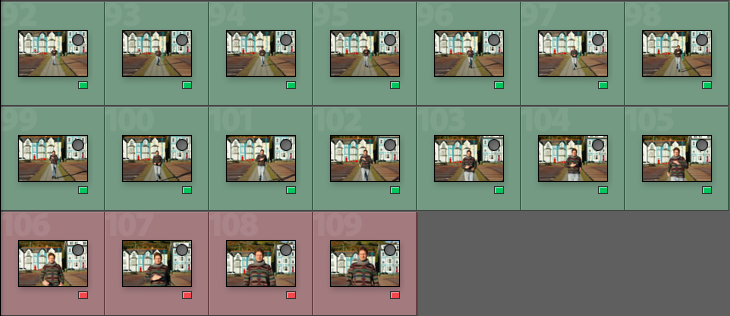
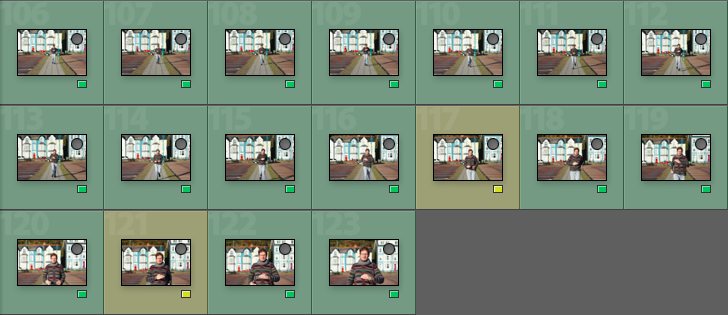
The biggest gap in performance appears when filming video in continuous AF where, depending on the light, the Samyang can take a little longer to change the focus point. On the Sony, the change is almost instantaneous regardless of the light conditions.
One drawback of the Samyang is that its the focus mechanism is quite noisy. The noise is most noticeable in S-AF but is also audible in C-AF, making it a less-than-ideal choice for video recording. The Sony, on the other hand, is very quiet.
[instagram url=https://www.instagram.com/p/BM2TZUDDqI4/ hidecaption=true width=560]
Conclusion
I’m truly pleased that Samyang has, on its first attempt, created an autofocus lens that is a viable alternative to the Sony 55mm for those hoping to spend less on a standard lens for the full-frame E-mount system.
Though it lacks the pin-sharp rendering and the distinctive “swirly” bokeh of the 55mm, the 50mm has the benefit of a 1.4 aperture, an attractive out-of-focus rendering and very good sharpness through the aperture range. And of course, it costs around $300 less.
Where the Sony 55mm shines is in its compact and lightweight weather-resistant construction that matches both full-frame and APS-C Sony cameras to a T. Its autofocus motor is also slightly faster and much quieter, which could make a difference if you often work in low-light or situations where complete silence is required.
Check price of Samyang 50mm on
Amazon | Amazon UK | B&H Photo | eBay
Check price of Sony 55mm on
Amazon | Amazon UK | B&H Photo | eBay
Second-hand E-mount lenses on
Sample Images
Samyang-Rokinon 50mm f/1.4 AF







Sony FE 55mm f/1.8








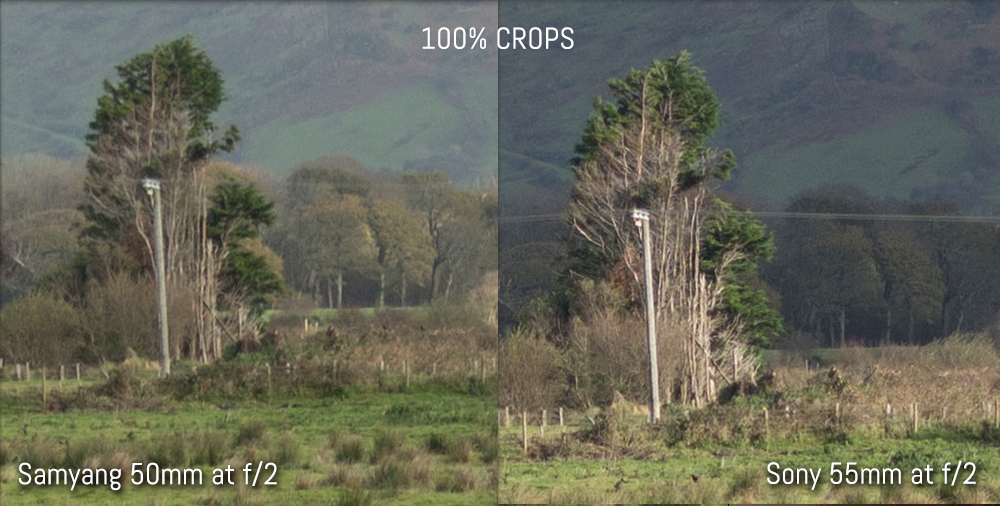

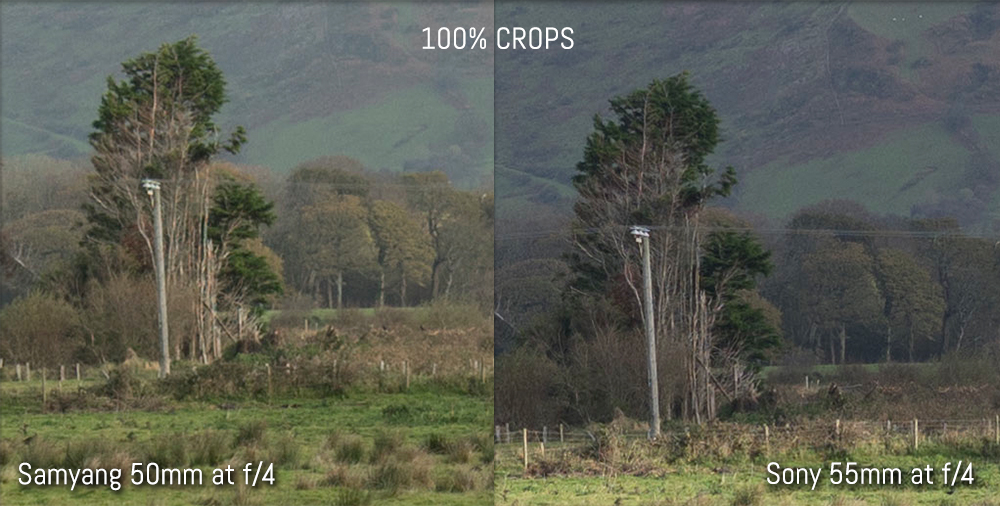
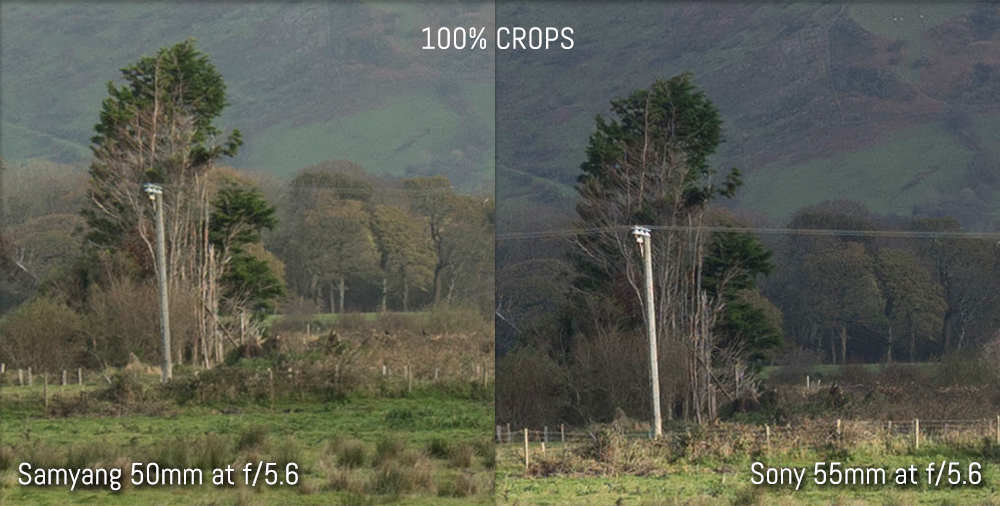
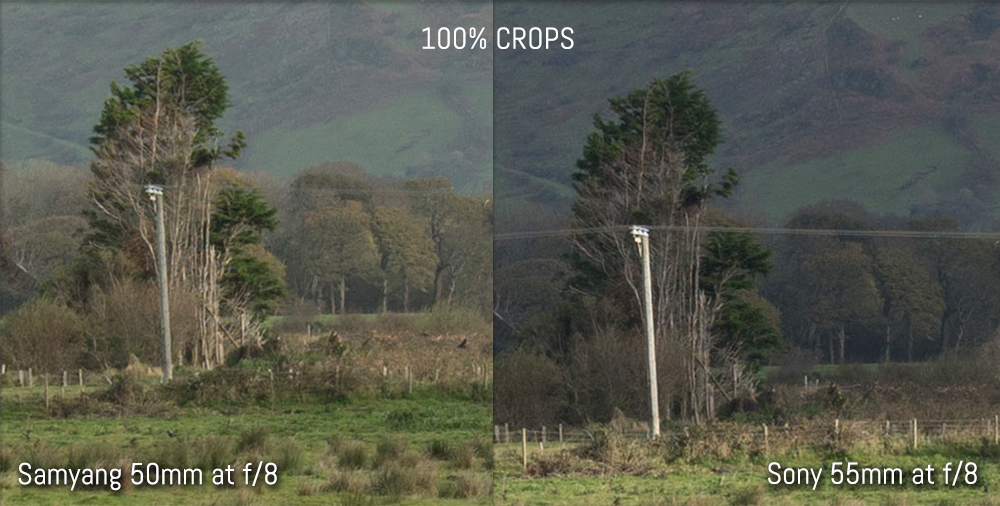
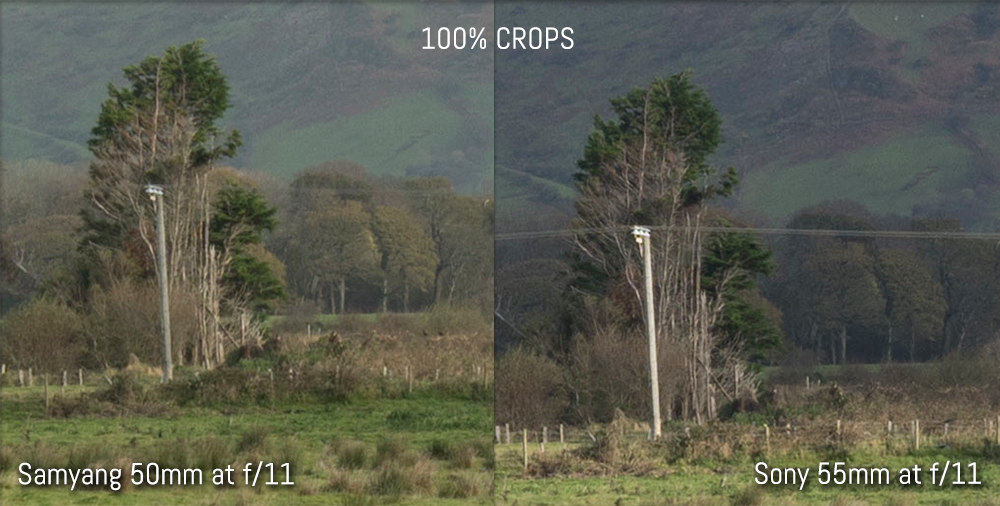
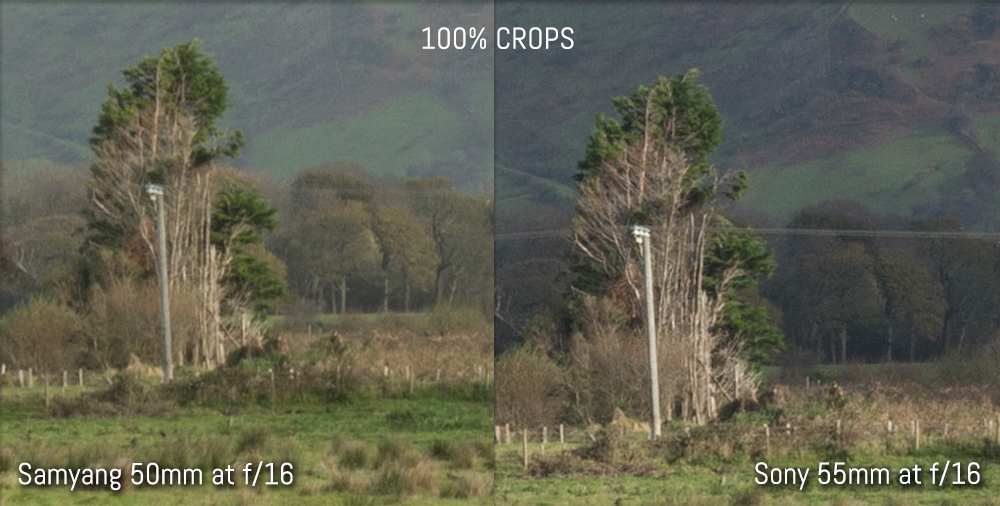
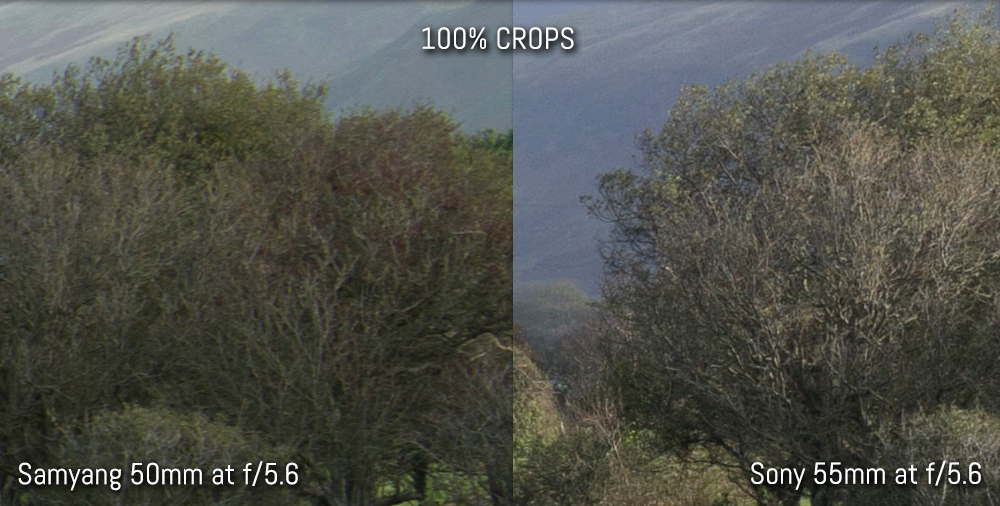
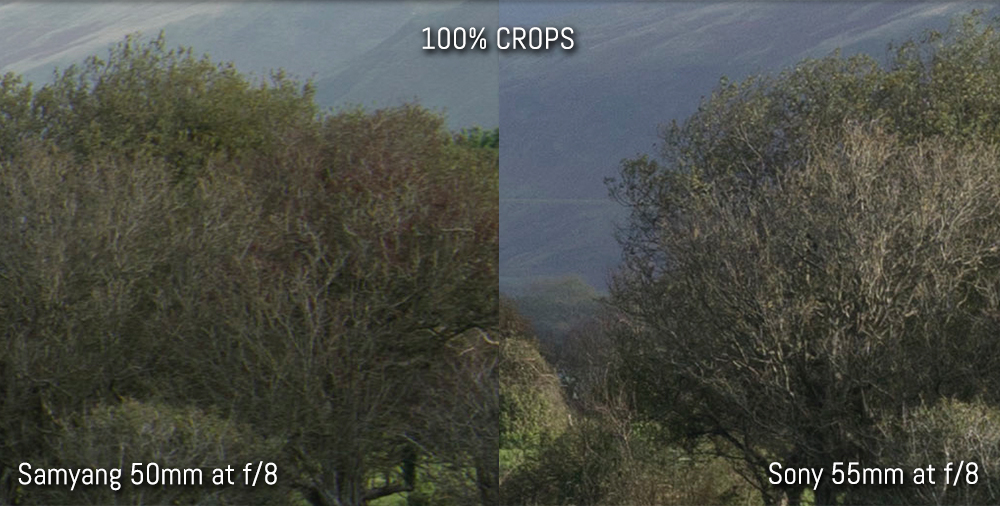
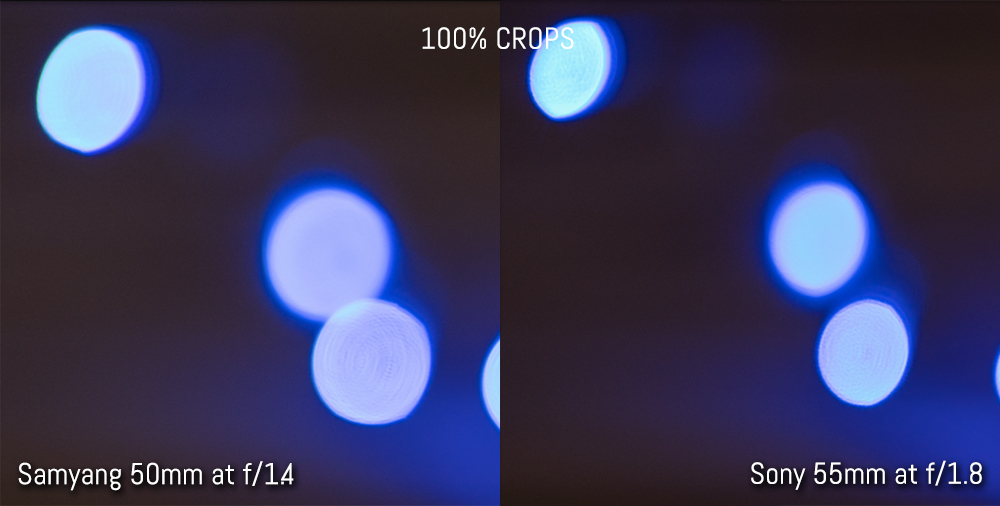
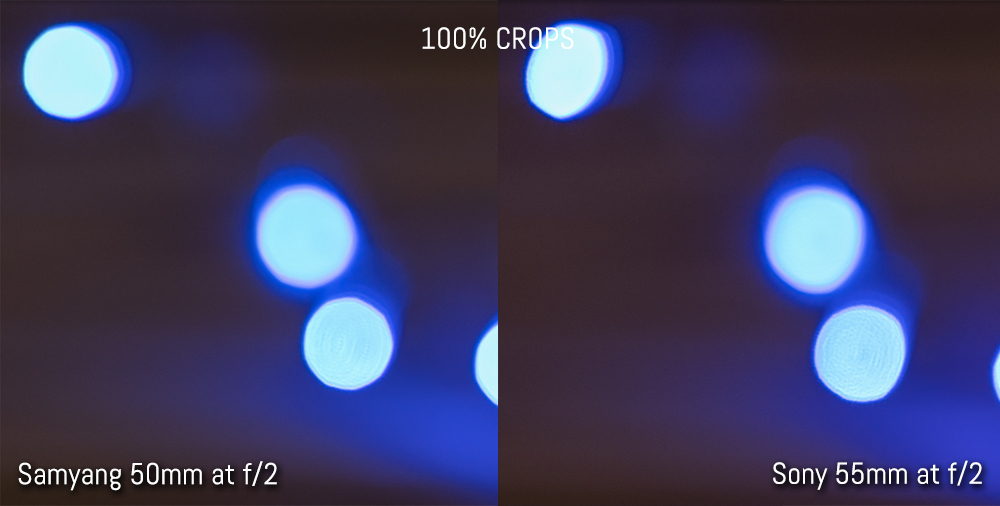
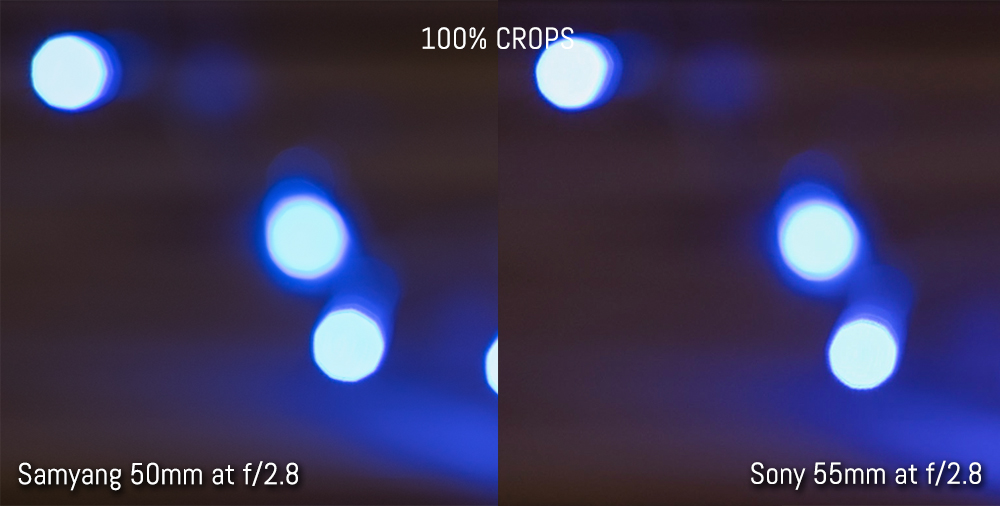
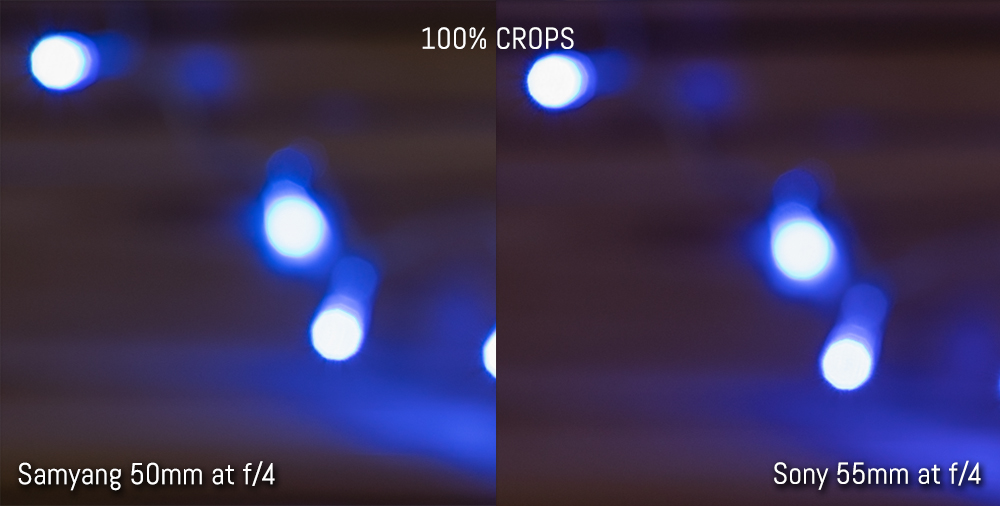






I don’t know… The Samyang looks damn good here.